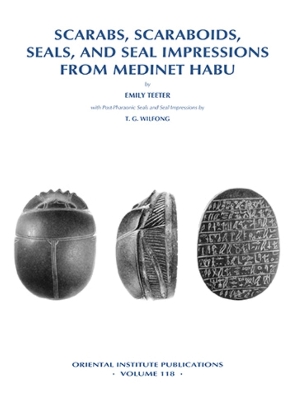Medinet Habu in western Thebes (modern Luxor, Egypt) is dominated by the great mortuary temples of King Ramesses III (ca. 1182 BC), and Kings Aye and Horemheb (ca. 1324-1293 BC). It served as the seat of the regional government in the Late New Kingdom, and an important Coptic Christian community grew up within its great fortification walls. For nearly 1,500 years Medinet Habu played a central role in Egyptian religion, life, and politics. In 1924, the Oriental Institute of the University of Chicago began the documentation of Medinet Habu, but the last facet of the documentation - the publication of thousands of objects excavated at the site - was interrupted by World War II. This book, the first of a projected multiple volume series, marks the resurrection of the project to publish the small finds. It includes a catalogue of 349 scarabs, scaraboids (including lentoids, cowroids, and buttons), heart scarabs and their Sons of Horus amulets, heart amulets, seals, and seal impressions on bullae, vessel stoppers, amphora handles, mudbricks, and funerary cones that date from approximately 1470 BC to the eighth century AD. Each object is described and illustrated and, whenever possible, placed in its original archaeological context. These scarabs and scaraboids comprise one of the largest groups of such material excavated from any site in Egypt.
- ISBN10 1885923228
- ISBN13 9781885923226
- Publish Date 15 August 2003
- Publish Status Active
- Publish Country US
- Imprint Institute for the Study of Ancient Cultures
- Format Hardcover
- Pages 272
- Language English
